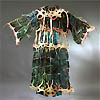January, 2008

Happy New Year!In the first issue of our MyLovelyBeads.com newsletter:
Garnet - January birthstone
If you have any questions or suggestions please contact
us at info@mylovelybeads.com.
Happy birthday! Featured artist - Dawn Vertrees New on MyLovelyBeads.com Free imagination Step by step - Gerberas February upcoming events Best regards,
MyLovelyBeads.com Team |
Garnet - January birthstoneGarnet is not a mineral, it is a group of minerals that have been used since the Bronze Age as gemstones and abrasives. Garnets species are found in many colors including red, orange, yellow, green, blue, purple, brown, black, pink and colorless. The name "garnet" comes from the Latin GRANATUS (grain), possibly a reference to the Punica GRANATUM (pomegranate), a plant with red seeds similar in shape, size, and color to some garnet crystals. Six common species (but altogether, more than ten different gemstones!) of garnet are recognized based on their chemical composition, they make up two solid solution groups: Pyralspite garnets (almandine, pyrope, spessartine) and Ugrandite garnets (andradite, grossular, and uvarovite). Almandine is a garnet of deep red color, inclining to purple. The name is a corruption of ALABANDICUS, which is the name applied by Pliny the Elder to a stone found or worked at Alabanda, a town in Caria in Asia Minor. Almandine is found in many localities: Sri Lanka (Ceylon ruby), the US (Alaska), East Africa, Austria (Tyrol). Large deposits of fine almandine garnets were found, some years ago, in the Northern Territory of South Australia (Australian ruby). Pyrope is the only member of the garnet family to always display red color in natural samples, that is why it gets its name: from the Greek for fire and eye. The alternate names of pyrope are: Chrome pyrope, Bohemian garnet, Colorado ruby, Arizona ruby, etc. Pyrope is found in the western Alps, Czech Republic (the only source for a long time), Russia (Yakutia), South and East Africa, Mongolia, the US. The semi-precious stone rhodolite is a mixture of pyrope (about 70%) and almandine. Spessartine is an orange-yellow to violet-red garnet, the name is a derivative of Spessart in Bavaria. The major sources for gem quality spessartine are Sri Lanka and Brazil. Other sources include Australia, Burma, India, Israel, Madagascar, the US (Colorado and Maine), Namibia, and Angola. Andradite includes 3 varieties: melanite: black in color, usually not cut as a gemstone; demantoid: vivid green in color, one of the most valuable and rare stones in the world; topazolite: yellow-green in color and sometimes of high enough quality to be cut into a faceted gemstone. Andradite also is found in rarely colorless. Andradite was named after the Brazilian mineralogist Jose Bonifacio de Andrade e Silva. It is found in Italy, the Ural Mountains of Russia, the US (Arizona and California), Namibia. Grossular belongs to another garnet group. The name grossular is derived from the botanical name for the gooseberry, GROSSULARIA, in reference to the green garnet of this composition that is found in Siberia. Other shades include cinnamon brown (hessonite or cinnamon stone variety), red, and yellow. A highly valued grossular garnet from Kenya and Tanzania is called tsavorite. This garnet was discovered in the 1960s in the Tsavo area of Kenya, from which the gem takes its name. Viluite is a variety name of grossular, that is not a recognized mineral species. It is usually olive green though sometimes brownish or reddish, brought about by impurities in the crystal. It comes from the Vilyuy river area in Siberia. Grossular is known by many other names, that include: South African jade, garnet jade, Transvaal jade, African jade, etc. Uvarovite is a rather rare garnet, the only consistently green garnet species, with a beautiful emerald-green color. It is named after Count Sergei Semenovitch Uvarov (1765-1855), a Russian statesman and amateur mineral collector. Uvarovite is found in the Ural mountains of Russia, Finland, Spain, Canada, Norway, and South Africa. The rarest of all garnets is the blue garnet, discovered in the late 1990s in Bekily, Madagascar. It is also found in parts of the US, Russia and Turkey. It changes color from blue-green in the daylight to purple in incandescent light. Other varieties of color-changing garnets exist. In daylight, their color ranges from shades of green, beige, brown, gray, and blue, but in incandescent light, they appear a reddish or purplish/pink color. Because of their color changing quality, this kind of garnet is often mistaken for Alexandrite. Pure crystals of garnet are used as gemstones to make jewelry. Garnet sand is a good abrasive, and a common replacement for silica sand in sand blasting. Mixed with very high pressure water, garnet is used to cut steel and other materials in water jets. Garnet facts 1. Garnet is the state mineral of the state of Connecticut. 2. Garnet is the state gemstone of the state of New York. 3. The brilliant green garnet from the Urals was a favorite gem of Russian star jeweler Carl Faberge. |
|||||
Happy birthday, MyLovelyBeads.com!In January we celebrate the 1st anniversary of MyLovelyBeads.com! One year seems to be a short period, but it was the time for us to grow, to enhance and to improve our service. We have already added the new sections: Surveys, Partners, Recognition. We created our Jewelry Guide that includes the glossary, articles and interesting facts on jewelry, jewelry making articles and tutorials, galleries of the best jewelry and bead work. In June we started sending out our monthly illustrated newsletter. We hope, that our website is much more friendly now, it shows up on the first pages of the most search engines, if you look for "beaded jewelry", "gemstone jewelry", "custom jewelry" (we are defining MyLovelyBeads.com as "Custom Gemstone And Beaded Jewelry" website). And we are still developing the site to make you feel better when you come to us! We love our customers and visitors! Welcome to MyLovelyBeads.com! |
|||||
Featured artist
Although Dawn has had an interest in sculpting since she was a child, her first career was in the tradeshow industry as a graphic artist and exhibit designer. Having weathered more than 25 years of trade show floors and hundreds of thousands of frequent flier miles, the fallout of 9/11 was the event that ultimately convinced Dawn to get back to her love of sculpting. The first thing you'll notice about Dawn's work is the wonderful detail and faithful reproduction of each small detail. But looking further, it's the "personality" she gives each piece that brings it to life. Dawn's special abilities in this regard have won her a faithful following of devoted fans and customers. Dawn started sculpting jewelry originally from porcelain. This medium allowed her to sculpt very fine detail, yet shape her leaves and flowers in a very natural and realistic way. However, porcelain proved itself to be somewhat fragile. The solution? Sterling silver! Dawn has now successfully applied her sculpting techniques to sterling silver, producing flowing, natural designs very similar to what you would find on fine porcelain vases and tableware. Dawn has found a wonderful outlet for her artistic talents in the design and sculpting of her unique jewelry. Every day is a new adventure, and every customer a new friendship. For more information about Dawn & the projects she is currently working on, please visit her at www.dawnvertrees.blogspot.com |
|||||
New on MyLovelyBeads.comWe are pleased to inform you that we continue developing our website. Our goal is not only to sell our beautiful jewelry on the site, but also provide you with interesting information. Recently two more sections were added to our Jewelry Guide:
|
|||||
Free imagination
Visit our gallery to see Elena's jewelry artwork: jewelry gallery. Contact Elena with any questions at kenty73@mail.ru. Visit Elena's website: www.biserhipez.narod.ru. |
|||||
Step by stepFor those who likes beading we continue to publish our "step-by-step" tutorials. Some of the bead masters design beautiful jewelry, others create beaded toys, and others make plants, trees and flowers using beads and wire. Elena Bashkatova, jewelry designer and beads and wire sculptor from Moscow, shows us today, how to make beautiful Gerbera Flowers using beads. |
|||||
Upcoming events
February 22 - April 13, 2008 2008 Wearable Expressions International Juried Exhibition of Wearable Art will take place in Los Angeles area, among artists from all over the world are beaded jewelry artists: Zoya Gutina, Tatiana Van Iten, Lana May. |
|||||
© 2010 MyLovelyBeads.com All Rights Reserved.
If you do not want receive our newsletter and you wish to remove your email address from our mailing list, please click the following link to unsubscribe.



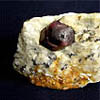
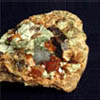
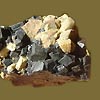
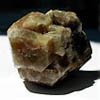
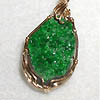
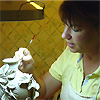 Born and raised in North Carolina, living now in Florida, Dawn
Vertrees was surrounded by artistic talent from an early age.
Dawn's father, Hugh Whisnant, was an extremely talented and
accomplished artist. His works have been displayed in prominent
public buildings throughout the South. Hugh instilled in his
daughter a love of color, form, and perspective that would stay
with her a lifetime.
Born and raised in North Carolina, living now in Florida, Dawn
Vertrees was surrounded by artistic talent from an early age.
Dawn's father, Hugh Whisnant, was an extremely talented and
accomplished artist. His works have been displayed in prominent
public buildings throughout the South. Hugh instilled in his
daughter a love of color, form, and perspective that would stay
with her a lifetime.
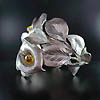
 Free your imagination! Elena Bashkatova of Moscow, Russia designs by this
motto. Her imaginative and extraordinary jewelry has developed from beading
with flowers and trees to incorporating wire, beads, crystals, shells and
more to create her free-form works of art. Elena began beading her inspired
creations in early 2006 after attending a beader's forum. She now not only
creates jewelry that will expand your horizons, but also creates tutorials
and works with beginning beaders to pass on her expertise. We know that you
will feel inspired too after viewing her art.
Free your imagination! Elena Bashkatova of Moscow, Russia designs by this
motto. Her imaginative and extraordinary jewelry has developed from beading
with flowers and trees to incorporating wire, beads, crystals, shells and
more to create her free-form works of art. Elena began beading her inspired
creations in early 2006 after attending a beader's forum. She now not only
creates jewelry that will expand your horizons, but also creates tutorials
and works with beginning beaders to pass on her expertise. We know that you
will feel inspired too after viewing her art.

